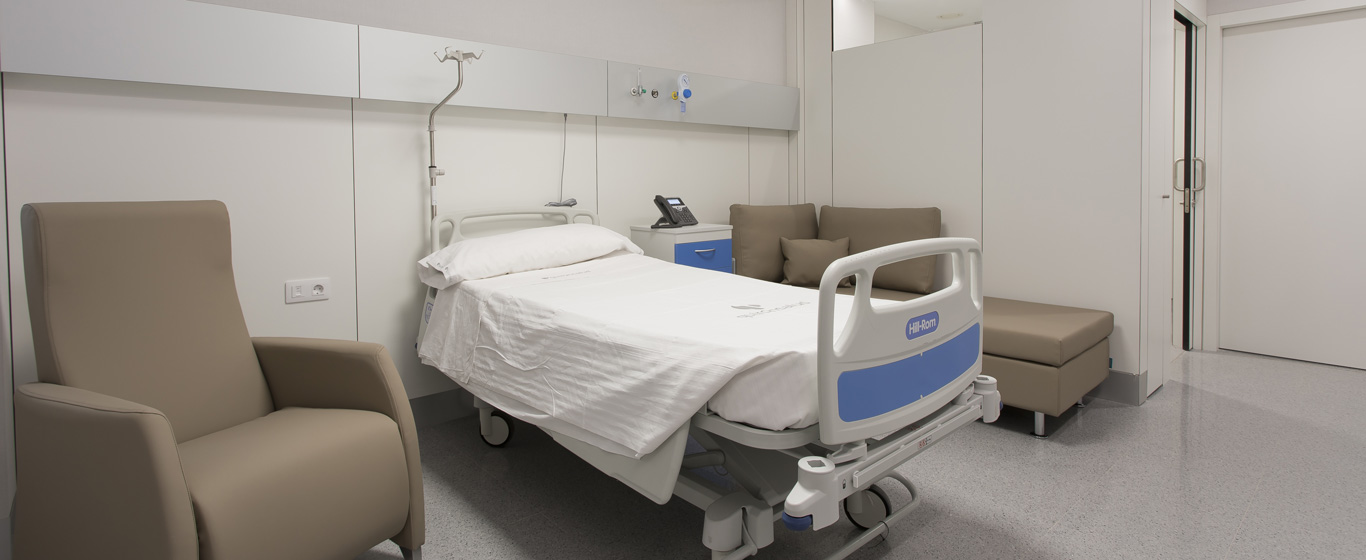Magnetic Resonance Imaging (MRI)
Magnetic resonance imaging is used to observe the internal organs of the body through images obtained with radiofrequency waves. It can be applied to various body parts to diagnose diseases or malformations.

General Description
Magnetic resonance imaging (MRI) is a non-invasive test that provides images of the body’s interior using radiofrequency waves and a magnetic field. Since it does not use radiation, it is not dangerous and does not have side effects on the body.
Depending on the characteristics of the machine used, there are two types of MRIs:
- Closed MRI: Large cylindrical magnets are used. To obtain the images, the patient is placed inside the tube, which is about 70 centimeters in diameter. In these cases, the magnetic field is more easily concentrated, resulting in more reliable images.
- Open MRI: The patient is placed between two plates placed across from each other with a gap of about 180 centimeters, making the experience more comfortable and reducing feelings of claustrophobia. The images obtained are of lower quality because it is harder to create a magnetic field.
When highly detailed images are required for a more precise diagnosis, contrast MRI is used, typically with gadolinium. This substance helps to visualize tissues more clearly.
Thanks to the ability to obtain high-resolution images from various angles, MRI is one of the most reliable studies for diagnosing diseases, planning surgeries, or monitoring the progress of specific treatments.
When is it indicated?
MRI is primarily used to study the brain, heart, joints, and breasts:
- Brain MRI: Detects aneurysms, tumors, lesions, strokes, or pathologies of the inner ear or eye. It also provides information about damage caused by trauma or Alzheimer's disease.
- Cardiac MRI: Provides information about the condition of the heart’s chambers and walls, as well as the presence of obstructions or inflammation.
- Shoulder or Knee MRI: Helps detect tumors or injuries in bones, cartilage, or ligaments.
- Breast MRI: Very useful for detecting tumors when breast tissue is dense, and mammograms do not provide clear results. It also helps diagnose fractures or displacements in patients with breast implants.
- Soft tissue MRI: Identifies tumors or malformations in the pancreas, kidneys, uterus, or liver.
How is it performed?
For an MRI, the patient must lie on a table that is placed inside the tube. Once inside, a magnetic field is created, and radio waves are emitted.
The images, which are cross-sectional slices, are generated when the hydrogen atoms in the body react to these stimuli. The photos taken from different angles can be combined to form a 3D view.
Risks
MRI does not pose any risk to health. However, it is contraindicated for people with metallic devices such as prosthetics, artificial heart valves, cochlear implants, pacemakers, implantable defibrillators, pins, or intrauterine devices, among others. For pregnant women, specialists assess the case individually to determine whether an alternative test should be chosen.
Allergic reactions to the substances used in contrast agents are rare, and when they occur, they are usually mild itching.
Patients with claustrophobia may require an open MRI to avoid panic attacks during the test.
What to expect from an MRI
To undergo an MRI, you need to remove your clothes and wear a gown provided by the medical center. Additionally, any metallic objects (jewelry, hairpins, hearing aids, dentures, glasses) must be removed before entering the testing area.
It is important to mentally prepare for the fact that the device is a narrow tube, and you will need to stay as still as possible during the entire procedure. Although it is painless, there will be banging and loud noises that are part of the normal process.
Hospitalization is not required for an MRI as it is an outpatient procedure. It typically lasts between 30 and 60 minutes, although it may occasionally take longer. The results are usually available a few days after the test.
Specialties that request an MRI
MRI is commonly requested by specialties like cardiology, neurology, traumatology, and gynecology, in addition to internal medicine, oncology, urology, and digestive system fields.
How to prepare
Fasting is not necessary for an MRI, so you can eat normally and take prescribed medication when necessary. In some cases, like tests related to the digestive system, specific guidelines will be provided when the appointment is made.














































































































